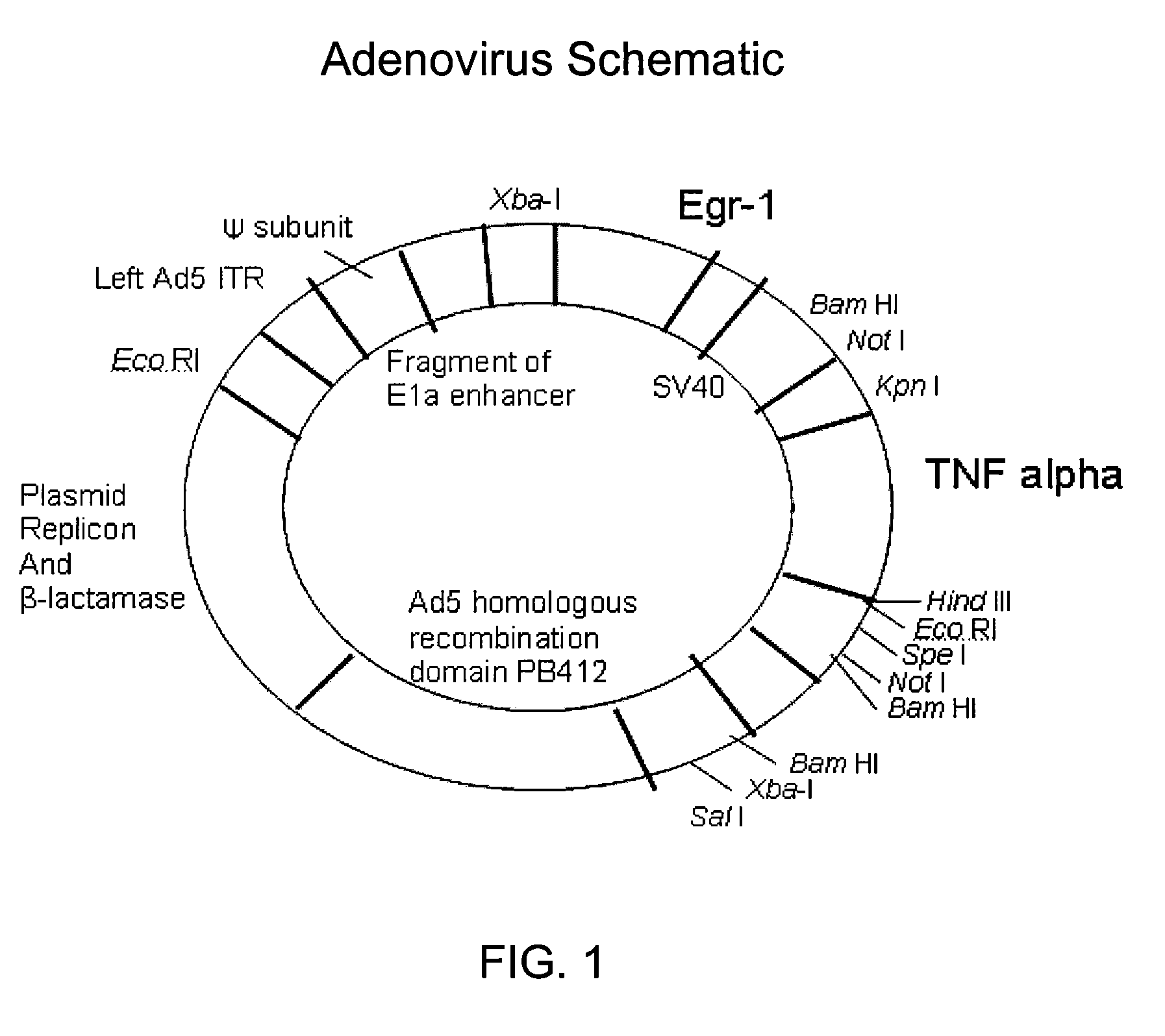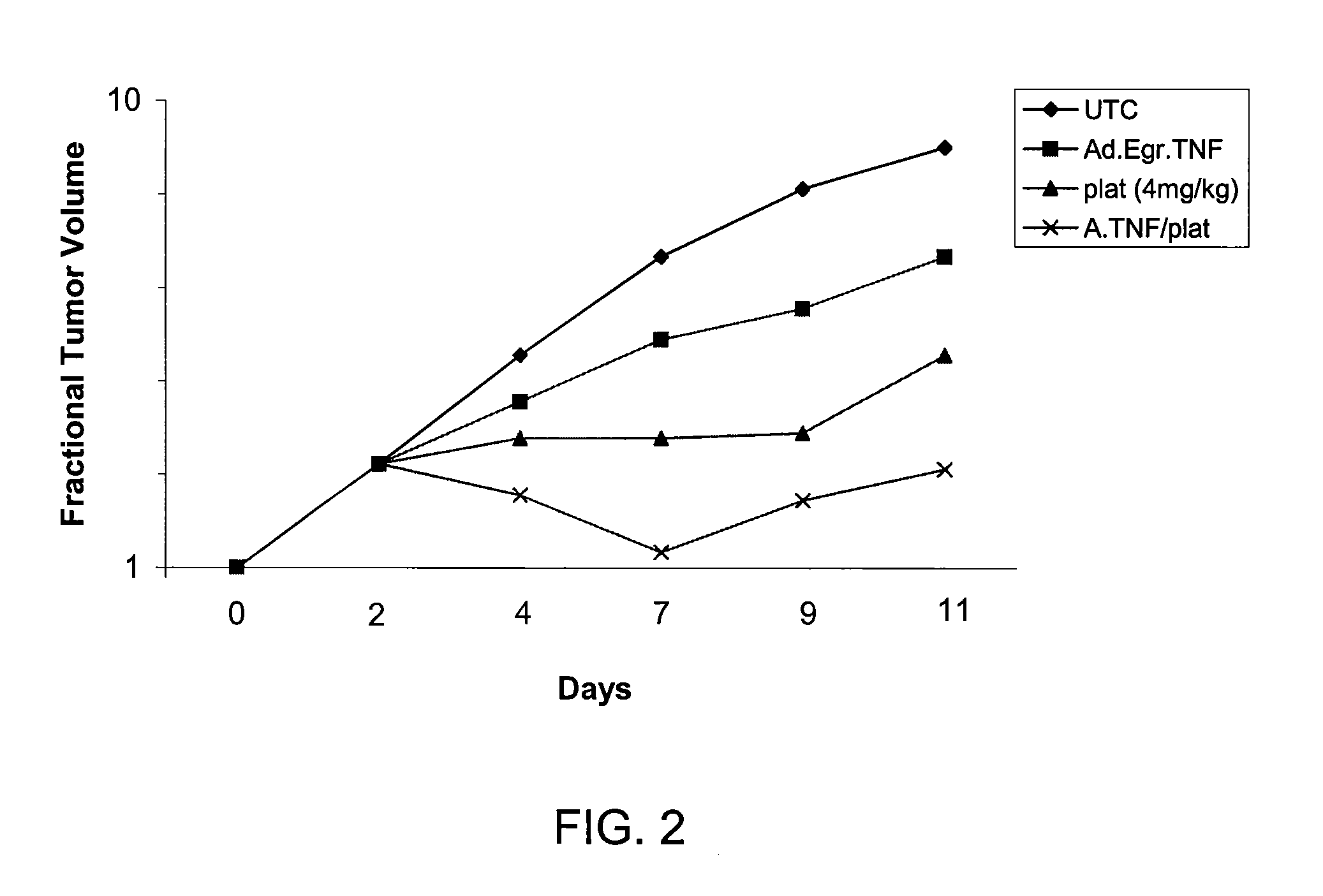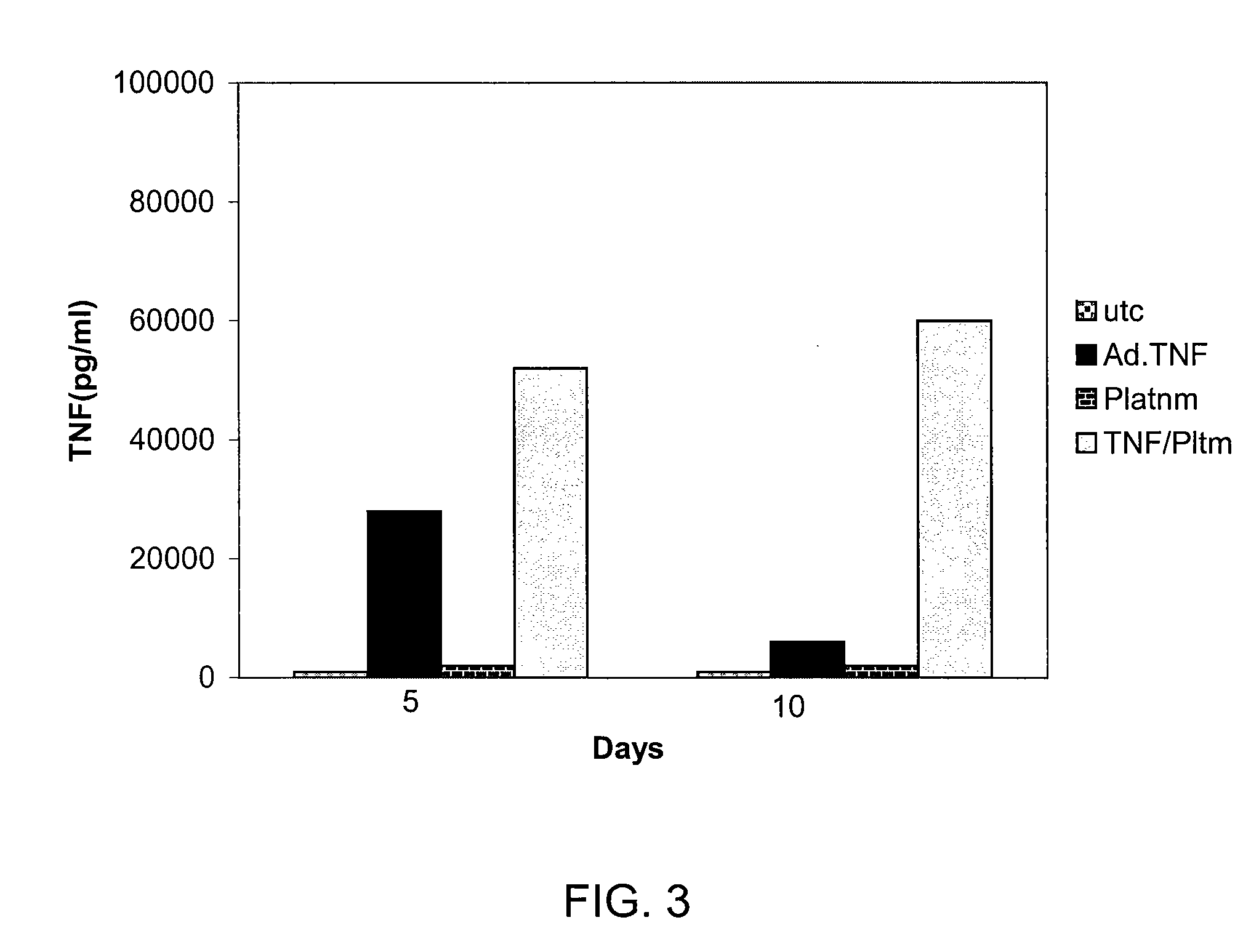Activation of Egr-1 promoter by DNA damaging chemotherapeutics
a chemotherapeutic and promoter technology, applied in the field of egr1 promoter activation by dna damage chemotherapeutics, can solve the problems of ineffective chemotherapeutics used successfully to combat certain cancers, few chemotherapeutic agents are curative in human cancer treatment, and the subpopulation of cancerous cells to continue growing, so as to enhance the therapeutic response of neoplastics and avoid toxic effects
- Summary
- Abstract
- Description
- Claims
- Application Information
AI Technical Summary
Benefits of technology
Problems solved by technology
Method used
Image
Examples
example 1
[0071]The following materials and methods were used in the experiments described in Examples 2-5.
[0072]Cells and cell culture. Cell lines Seg-1, a human esophageal adenocarcinoma (Dr. David Beer, Univ. of Michigan, Ann Arbor, Mich.), and DHD / K12 / TRb (PROb), a rat colon adenocarcinoma established in syngeneic BD-IX rats by 1,2-dimethylhydrazine induction (Dr. Francois Martin, Univ. of Dijon, France), were maintained in Dulbecco's Modified Eagle Medium (DMEM) (GibcoBRL, Grand Island, N.Y.) supplemented with Fetal Bovine Serum (FBS, 10% v / v) (Intergen, Purchase, N.Y.), penicillin (100 IU / ml), and streptomycin (100 μg / ml) (GibcoBRL), at 37° C. and 7.5% CO2.
[0073]Animals. Athymic nude mice (Frederick Cancer Research Institute, Frederick, Md.) received food and water ad libitum. Experiments were in accordance with the guidelines of the University of Chicago.
[0074]Viral vectors. The viral vectors Ad.Egr.TNF.11D and Ad.Null.3511.11D (GenVec, Gaithersburg, Md.) were store...
example 2
In vitro Induction of TNF-α in Human and Rat Tumor Cells Following Infection with Ad.Egr.TNF.11D and Exposure to Cisplatin
[0081]TNF-α production was tested in human esophageal Seg-1 cells and rat colorectal PROb cells infected with Ad.Egr.TNF.11D or Ad.Null.3511.11D following exposure to IR or cisplatin, using an ELISA specific for human TNF-α.
[0082]No TNF-α protein was detectable in Seg-1 pellets or supernatants from cultures infected with Ad.Null.3511.11D and treated with IR or cisplatin, moderate levels were detected in cells infected with Ad.Egr.TNF.11D alone (269.3±1.9, 167.8±8.4, 260.6±14.9; P<0.001), and significant levels were detected in cells infected with Ad.Egr.TNF.11D and exposed to 5 Gy IR (768.8±32.6, 593.0±27.6, 746.0±18.5), and to 5 μM cisplatin (885.3±28.7, 892.6±21.3, 901.7±21.7; P<0.001), at 24, 48 and 72 hours, respectively. Combined treatment of Ad.Egr.TNF.11D and IR resulted in a 2.9, 3.5 and 2.9-fold increase, and Ad.Egr.TNF.11D and cisplatin resulted in a 3....
example 3
CArG Elements of the Egr-1 Promoter Mediate Induction of TNF-α by Cisplatin
[0085]Seg-1 and PROb cells were co-transfected with the firefly luciferase reporter plasmid constructs pGL3 basic (negative control), pGL3 660 (minimal Egr-1 promoter, no CArG elements), or pGL3 425 (all CArG elements, no AP-1 sites), and the Renilla luciferase reporter plasmid construct pRL-TK.
[0086]Luciferase activity (LA) was minimal in Seg-1 cells transfected with the pGL3 basic (0.01-0.02) and the pGL3 660 (0.10-0.18) plasmid constructs, while cells transfected with the pGL3 425 plasmid construct exhibited a 2.4-fold increase in relative LA (15.07) following exposure to 20 Gy IR compared to untreated control (6.37) and a 2.0-fold increase in LA (2.89) following exposure to 50 μM cisplatin compared with untreated control. See FIG. 7A. Similarly, LA was minimal in PROb cells transfected with the pGL3 basic (0.21-0.30) and the pGL3 660 (0.76-1.84) plasmid constructs, while cells transfected with the pGL3 42...
PUM
| Property | Measurement | Unit |
|---|---|---|
| time | aaaaa | aaaaa |
| pH | aaaaa | aaaaa |
| pH | aaaaa | aaaaa |
Abstract
Description
Claims
Application Information
 Login to View More
Login to View More - R&D
- Intellectual Property
- Life Sciences
- Materials
- Tech Scout
- Unparalleled Data Quality
- Higher Quality Content
- 60% Fewer Hallucinations
Browse by: Latest US Patents, China's latest patents, Technical Efficacy Thesaurus, Application Domain, Technology Topic, Popular Technical Reports.
© 2025 PatSnap. All rights reserved.Legal|Privacy policy|Modern Slavery Act Transparency Statement|Sitemap|About US| Contact US: help@patsnap.com



